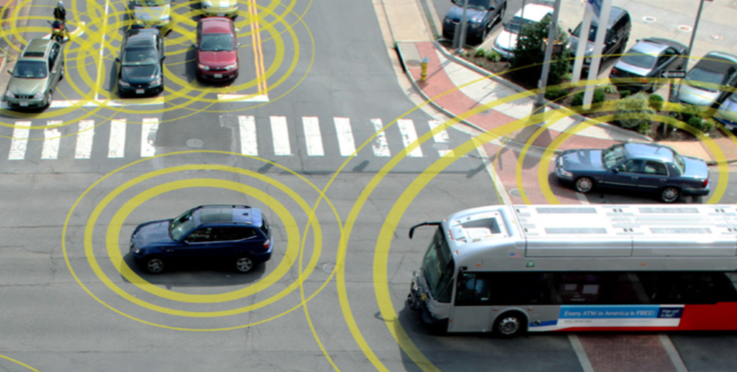The Department of Transportation wants to make cars talk
Cars might have to broadcast their whereabouts to other vehicles

Human drivers are imperfect pilots, placed in command of a couple thousand pounds of fast-moving metal. We’re just not equipped for the task: The eyes that evolved pointing forward (to better navigate our ancestral home in the trees) mean a smaller field of vision. Even with well-positioned mirrors, a human driving a car in three-dimensional space is bound to have blindspots. But what if the car itself didn’t? What if cars could sense where they were, and then communicate that information to other cars? Suddenly, a dense road of imperfectly piloted vehicles would become a smart, safe network, with the cars themselves constantly pinpointing one another in space and time.
A newly-proposed rule from the Department of Transportation wants to make that rosy robotic future a reality.
“We are carrying the ball as far as we can to realize the potential of transportation technology to save lives,” said U.S. Transportation Secretary Anthony Foxx in a press release. “This long promised [Vehicle to Vehicle] rule is the next step in that progression. Once deployed, V2V will provide 360-degree situational awareness on the road and will help us enhance vehicle safety.”
The “Vehicle to Vehicle” rule, abbreviated as V2V, would have cars share data with each other using dedicated short-range communication channels. That data would include information like location, direction, and speed, and would be updated and broadcast to nearby vehicles as frequently as 10 times per second. With that information, cars could warn drivers about dangers they were unable to see or even perceive.
This development isn’t exclusive to driverless cars, but the rule will certainly come in handy when those vehicles hit the road: Cars that communicate with one another are essential for a seamless, autonomous automobile future. In cars with autonomous driving capabilities, V2V sensors could help the autopilot brake, slow, or turn the vehicle to prevent a collision.
The rule is at the “proposed rulemaking” stage. After that comes 90 days for public comment, then revision, if necessary, before the rule begins to inch towards implementation. Should it come to fruition, we can expect a future of chatty cars.
